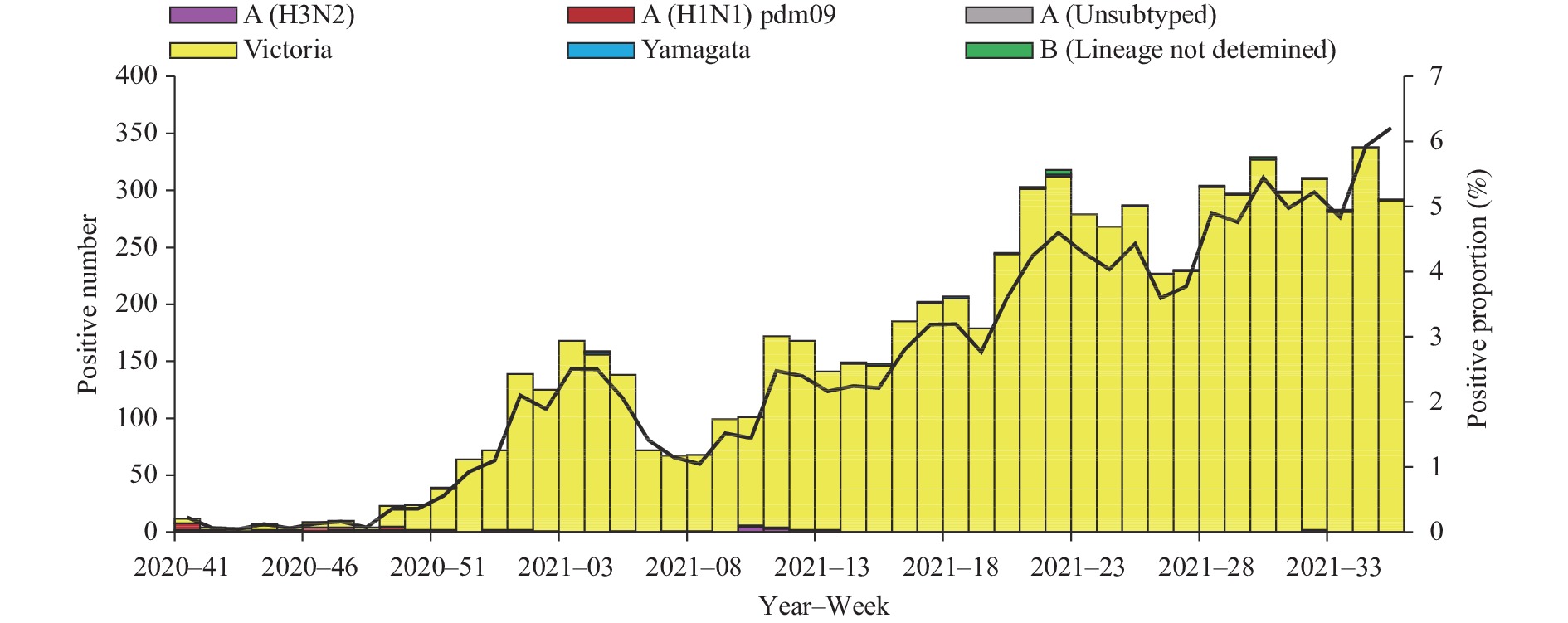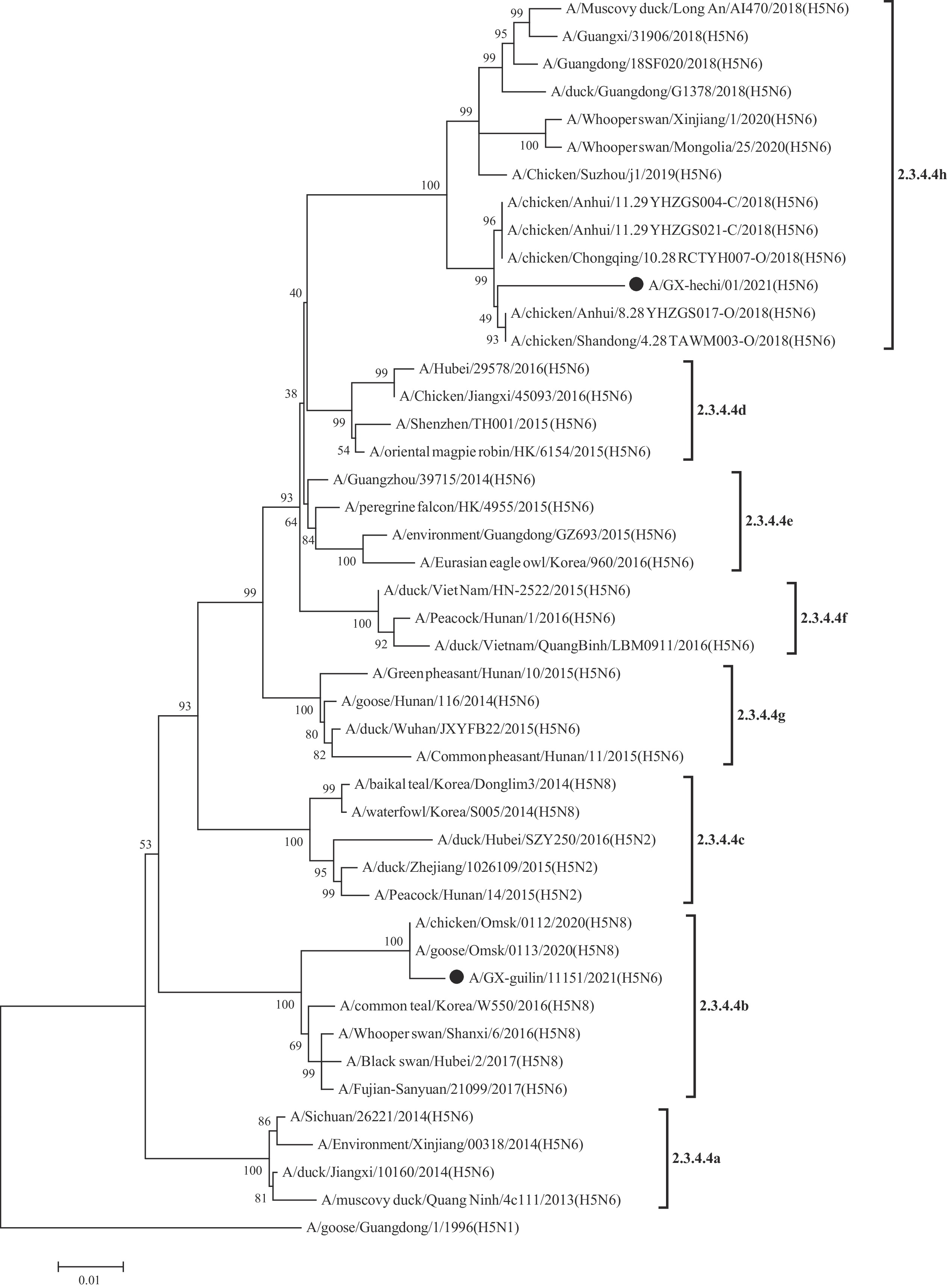2021 Vol. 3, No. 44
During the coronavirus disease 2019 (COVID-19) pandemic, the circulation of seasonal influenza virus declined globally and remained below previous seasonal levels. We analyzed the results of the epidemiology, antigenic, and genetic characteristics, and antiviral susceptibilities of seasonal influenza viruses isolated from the mainland of China during October 5, 2020 through September 5, 2021, to better assess the risk of influenza during subsequent influenza season in 2021 – 2022.
Positive rates of influenza virus detection during this period were based on real-time polymerase chain reaction (PCR) detection by the Chinese National Influenza Surveillance Network laboratories, and isolated viruses from influenza positive samples were submitted to the Chinese National Influenza Center. Antigenic analyses for influenza viruses were conducted using the hemagglutination inhibition assay. Next-generation sequencing was used for genetic analyses. Viruses were tested for resistance to antiviral medications using a phenotypic assay and next-generation sequencing.
In southern China, the influenza positivity rate was elevated especially after March 2021 and was higher than the same period the previous year with the COVID-19 pandemic. In northern China, influenza positive rate peaked at Week 18 in 2021 and has declined since then. Nearly all isolated viruses were B/Victoria lineage viruses during the study period, and 37.3% of these viruses are antigenically similar to the reference viruses representing the vaccine components for the 2020–2021 and 2021–2022 Northern Hemisphere influenza season. All seasonal influenza viruses were susceptible to neuraminidase inhibitors and endonuclease inhibitors.
Influenza activity has gradually increased in the mainland of China in 2021, although the intensity of activity is still lower than before the COVID-19 pandemic. The diversity of circulating influenza types/subtypes decreased, with the vast majority being B/Victoria lineage viruses. The surveillance data from this study suggest that we should strengthen influenza surveillance during the upcoming traditional influenza season. It also provided evidence for vaccine recommendations and prevention and control of influenza and clinical use of antiviral drugs.
H5N6 has replaced H5N1 as a dominant avian influenza virus (AIV) subtype in southern China. The increasing genetic diversity and geographical distribution of H5N6 pose a serious threat to the poultry industry and human health.
A total of 2 cases of H5N6 that occurred from February 2021 to July 2021 in Guangxi, China were reported in this study. Phylogenetic analysis of gene was constructed, and some mutations of HA gene, PB2 gene, PA gene, M1 gene, NS1 gene, the receptor-binding site were detected. The evolutionary origins of the internal genes were different.
As a multi-source reassortant virus, the H5N6 highly pathogenic AIV is continuously evolving. There is an urgent need to strengthen the surveillance of drug-resistant strains and novel variants.



 Subscribe for E-mail Alerts
Subscribe for E-mail Alerts CCDC Weekly RSS Feed
CCDC Weekly RSS Feed

